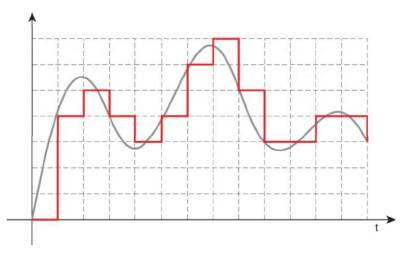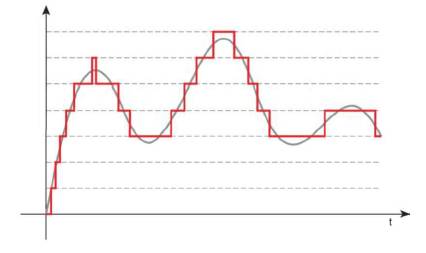The PSTN networks are made up of CO switches to which subscriber lines are connected. Organizations/ businesses need hundreds of communication lines to communicate internally/ externally with their customers, business associates, service providers and so on in case companies goes on purchasing individual phone lines for each of such requirements then it would be not an economical proposition. So the solution is to deploy a PBX (Private Branch Exchange) network or key system to manage in-house phone lines/phones. PBXs allow users to communicate internally/externally without use of PSTN resources. PBX is located in organization premises, it is configured in a way similar to a PSTN CO switch having dial plans for all numbers within the organization, and external calls are routed over a CO trunk to PSTN CO switch if the dialed number is not on PBX system. Figure 1 illustrates the components of PBX systems:
Figure 1: PBX systems components

A traditional PBX system is a big box /enclosure with multiple cards; these cards perform specific function to enable voice communication. PBX comprises of a control plane a terminal interface to connect phones to features to be used. Port to route a call is determined by the switching engine.
A PBX can comprise of line cards, trunk cards, and control complex. Function of each is described below:
Line Card – This provide connection between telephone equipment and PBX system.
Trunk Card – is used to provide connection between PBX to PSTN and to PBX at other end.
Control Complex – is meant to handle functions such as – call routing, call forwarding, call setup, and other management functions such as hold, transfer, conference, park, voice mail and so on.
PBXs are available in different sizes depending on the business requirements, ranging from 10 to 20,000 phones.
Alternative to PBX for smaller businesses is key systems, it supports up to 50 users, having limited feature set as compared to a PBX system. They offered a shared line kind of environment for example a number of lines are assigned to group of users, if person A has to use line 1, the line 1 would be busy for all other users.
Trunk Lines is a circuit connecting telephone switchboards, in the case of PBX systems trunk lines are the phone lines coming into the PBX from the telephone provider of CO network. Trunking helps to save costs because the number of trunk lines is less than extension lines. Trunk lines send voice and data in format such as analog, T1, E1, ISDN or PRI. The dial tone for outgoing calls is known as DDCO (Direct dial central office) trunks. Figure 2 illustrates role of a trunk line in a PBX network.
Figure 2: Trunk lines setup

This diagram illustrates how PBX makes a basic call routing decision regarding when to route the call to the PSTN or to an internal phone extension. This process is hidden from the user such as all calls starting with a “1” trunk for instance or can be transparent wherein user can assist PBX to choose the path (Such as dial “9” for an outbound trunk).
Tie-Lines– When a business has multiple sites and they have large volume of calls between sites, the organizations usually go for a tie-line. This is simply a permanent circuit between two points (T1, E1, fractional T1/E1, or some other type of transport). This saves the cost because running call over permanent circuit instead over a PSTN would be cheaper. Figure 3 illustrates use of tie-lines.
Figure 3: Tie lines
The tie line will use PSTN but business will pay at a flat rate for the dedicated use of circuit between two locations.
The PBX will use a preprogrammed automatic route selection (ARS) table to decide which trunk to be used like in the above figure PBX is configured to use tie line between two sites. In case tie-lines become full the PBX will use central office (CO) trunk as overflow to PSTN.
This concludes the CCNA Voice lesson on understanding the components of traditional telephony systems and how PBX, trunk lines are used to router /handle voice traffic. Additionally we covered where we should use key systems and how tie- lines are used to mange communication costs in an efficient manner.
